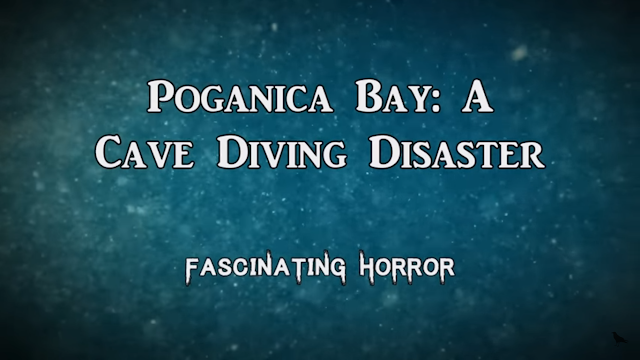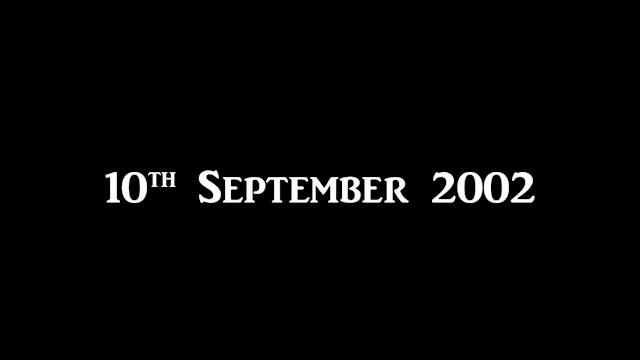Fascinating Horror - On the 11th of September, 2002, a diving party in Poganica Bay, Croatia, placed a call to emergency services: a member of their group had entered an underwater cave system and not resurfaced.
Police divers attended the scene to search for the missing man.
They would eventually locate his body… but when they did so it would be under circumstances that nobody had even remotely expected.
Background
Since the 1960s, tourism had been a growing industry in Croatia.
Travellers flocked to the country to take advantage of its beautiful Mediterranean coastline and sun-soaked historic towns and cities.
Diving was also a popular pursuit in the waters off the coast, which were clean, relatively warm, and filled with abundant sea life.
Poganica Bay had all of these things… and more besides.
Beneath the idyllic surface could be found an extensive system of caves, which were known as a challenging explore for experienced divers only.
The system was made up of two main chambers – called the Shallow Gallery and the Deep Gallery.
To access these divers entered through a small underwater portal, proceed down a long and narrow chimney, and navigated a labyrinth of narrow, twisting corridors.
Two things made this system particularly dangerous.
First: the narrow passageways were filled with very fine silt.
Any movement stirred up this silt, reducing visibility to zero almost instantly.
In addition to this, the corridors between Shallow Gallery and Deep Gallery were complex and confusing, making it extremely difficult to find the exit once inside the caves.
The Poganica Bay Accident
On the 10th of September, 2002, a group of five friends sailed out to the location of the caves on the tourist boat Domino, accompanied by two dive instructors.
They were a party of mixed ability when it came to diving – some had a lot of experience, and some had none at all.
One of the more experienced divers in the group was Miroslav Kukliš.
As the others prepared dinner on board the boat, he took a preliminary dive, and noticed the entrance to the cave system.
The group had heard that there were caves in the area, but weren’t familiar with them.
Miroslav came back on board the boat and reported his findings, and over dinner the group discussed their options.
Some wanted to dive down and explore, some did not.
Some thought that the portal Miroslav had seen surely lead to a cavern, and some thought it was probably just a shallow pit.
After dinner, at 9:00pm, the captain of the ship took a nap, and two pairs of divers entered the water, each consisting of one dive instructor and one less experienced diver.
While they went down to explore the cave, Miroslav took a leisurely dive at a shallow depth, watching proceedings from a distance.
The two pairs of divers went down, entered the cave, and descended a short way into the chimney.
On realising just how extensive the system was, however, they immediately returned to the surface, agreeing that they weren’t equipped to explore a cave that deep or complex at the present time.
They spent a few hours enjoying some night diving, spotting fish and octopuses instead.
When they eventually returned to the boat, their friends informed them that Miroslav was nowhere to be found.
It was now 10:30pm.
The group quickly realised that he must have changed his mind without telling anyone, and descended to the portal to join them as they explored… perhaps not realising that they had given up and retreated to shallower waters.
At 10:46pm a dive instructor and one of the more experienced divers re-entered the water to search for Miroslav.
With a safety line, they descended into the cave as far as they dared and used flashlights to search, but were unsuccessful.
The group knew that if Miroslav was indeed underwater, he would run out of air very soon.
They placed a frantic call to the local police force, who told them to stay where they were, and that trained police divers would arrive in the morning to search.
The group spent a sleepless night anchored in Poganica Bay above the entrance to the cave.
When the police divers arrived at just before 08:00am the next morning, the group were distressed to see that they had only limited equipment with them.
They had to lend the police divers some of their own equipment.
Two police divers descended.
Ninety minutes later, one emerged, in clear distress and suffering from the symptoms of decompression sickness after ascending from the caves too rapidly.
This diver was rushed to hospital.
His colleague never emerged.
The following day, another team was sent into the caverns – this time much better equipped and prepared.
The bodies of both Miroslav and the police diver were recovered.
The police diver, 27-year-old Bernard Majić was recovered from the Shallow Gallery, at a depth of 24 metres (or 78 feet).
It appeared that he had let go of his safety line, become lost and disoriented, and tragically run out of oxygen.
Miroslav was recovered from the Deep Gallery, at a depth of 54 metres (or 177 feet).
Surprisingly, he was found with a knife protruding from his chest.
It appeared that, far from getting lost and drowning, Miroslav had been murdered.
Investigation and Aftermath
Suspicion fell immediately on Miroslav’s friends and fellow divers.
They were subjected to polygraph tests, during which two members of the group had strong reactions to the words “blood” and “knife” – something which, at the time, was considered strong enough evidence to take the group into custody.
An investigation began.
Miroslav’s diving equipment was checked and found to be in good working order, ruling out faulty equipment as a potential cause of death.
His diving computer was also tested – it was found to be working perfectly, and it showed no evidence of having been tampered with.
The police used the data stored on it to analyse his final dive.
It appeared that Miroslav had entered the water and dived straight down to a depth of 50 metres (or 165 feet), meaning that he must have entered Deep Gallery.
Almost immediately after reaching this depth, he had begun his ascent.
At this point, they surmised, Miroslav must have been unable to find the exit, and instead ended up in Shallow Gallery.
According to divers familiar with the caves, this was an easy mistake to make – indeed, the police diver might also have made the same error after letting go of his safety line.
After 35 minutes of searching for the exit, it appeared that Miroslav became lost once again in Deep Gallery.
He stopped moving for five minutes – perhaps resting or taking advantage of an air bubble at the top of the cave.
Then, abruptly, Miroslav lost buoyancy and dropped to the bottom of the gallery.
It was determined that it was at this point that Miroslav was stabbed in the chest.
The police took this chain of events into consideration, and speculated on how their suspects could have committed a murder.
Had Miroslav been stabbed on board the boat and then taken down to Deep Gallery? No – it would have been impossible for his killers to simulate Miroslav’s movements for the dive computer, and still return to the boat in time without experiencing severe decompression sickness.
Perhaps one of the divers who went searching for Miroslav had found him in Deep Gallery, and then stabbed him with his own knife? This was also not possible – according to the dive computer, Miroslav was already dead by the time his two friends set out to search for him.
While the police were initially convinced that Miroslav had been murdered by one of his friends, as the investigation went on this possibility became less and less likely.
There simply wasn’t any way, given the timings and the data from the dive computer, that someone else could have killed him.
The systematic elimination of possible murder scenarios left only one remaining possibility: Miroslav had taken his own life.
This was something that was considered extremely unlikely – military divers who the police consulted with stated that, regardless of the situation they found themselves in, any diver would do everything they could to survive.
But Miroslav had not been a military diver.
He had been a chef, who dived as a hobby.
He had been alone and terrified, facing the prospect of a painful death by drowning.
It appeared that, with few other options left to him, Miroslav had decided to use one of the only tools available to him to end his life as quickly and cleanly as he could.
Miroslav’s friends were released from custody, and no charges were ultimately made against them.
They returned home without their friend, their lives forever changed by his strange and sudden loss.
Poganica Bay remains a popular diving spot – indeed, its reputation as dangerous and even deadly makes it more appealing to some.
In 2015, two more divers lost their lives while exploring the cave system, again after getting lost between the two galleries and running out of air.
In the aftermath of these deaths, the caves remains accessible – although a plaque has been installed by the entrance, warning anyone who might consider exploring the caverns beneath just how dangerous they can be.
SOURCES:
- "Death of Miroslav Kukliš" by Tomáš Sládek, published by Zdeněk Šraier via Strany Potápěčské, published October 2002. Link: http://www.stranypotapecske.cz/nehody/mirekn.asp?str=200508181437500
- "Diving in a cave near Šolta: He was found with a knife in his heart" by Raif Okić, published by Express, February 2019. Link: https://express.24sata.hr/life/ronio-u-spilji-kod-solte-nasli-ga-s-nozem-u-srcu-20206
- "The Secret Of The Deadly Cave Near Šolta, Which Takes Lives For Years" by Tomislav Kukec, published by Jutarnji List, September 2015. Link: https://www.jutarnji.hr/vijesti/crna-kronika/tajna-smrtonosne-spilje-kod-solte-koja-godinama-odnosi-zivote-uspanicite-se-cim-udete-u-taj-labirint...-295510
- "Scuba Diver with a Knife in His Chest: Homicide or Suicide?" by Nadan M Petri, Marija Definis-Gojanovic and Dejan Andric, published by Croation Medical Journal, 2003. Available via: http://neuron.mefst.hr/docs/CMJ/issues/2003/44/3/12808733.pdf









Post a Comment
Post a Comment